Install the app
How to install the app on iOS
Follow along with the video below to see how to install our site as a web app on your home screen.
Note: This feature may not be available in some browsers.
You are using an out of date browser. It may not display this or other websites correctly.
You should upgrade or use an alternative browser.
You should upgrade or use an alternative browser.
Energian tuotanto, kenttägeneraattorit ja muut
- Viestiketjun aloittaja ctg
- Aloitus PVM
https://spectrum.ieee.org/energywis...ssive-18gw-benban-solar-park-nears-completionAmid the sand dunes of the western Sahara, workers are putting the finishing touches on one of the world’s largest solar installations. There, as many as 7.2 million photovoltaic panels will make up Benban Solar Park—a renewable energy project so massive, it will be visible from space.
The 1.8-gigawatt installation is the first utility-scale PV plant in Egypt, a nation blessed with some of the best solar resources on the planet. The ambitious project is part of Egypt’s efforts to increase its generation capacity and incorporate more renewable sources into the mix.
“I think Benban Solar Park is the first real step to put Egypt on the solar production world map,” says Mohamed Orabi, a professor of power electronics at Aswan University.
Climate change is an increasingly urgent issue for Egyptians and much of the world. Already, global sea and air surface temperatures have risen by an average of 1 degree C above pre-industrial levels, according to the Intergovernmental Panel on Climate Change. In Egypt, global warming will reduce agricultural productivity, induce flooding in the fertile Nile Delta, and cause more people to die from heat stress.
Next week, world leaders will gather in New York for the United Nations Climate Action Summit, where they’re expected to present “concrete, realistic plans” to limit global warming to no more than 1.5 degrees Celsius. Low-carbon energy systems played a key role in a mitigation plan [PDF] that Egypt submitted in advance of the 2015 Paris Agreement. Once operational, Benban Solar Park will avoid two million tons of CO2 emissions per year [PDF] compared with what’s belched into the air by a thermal power station generating the same amount of electricity. That difference is roughly equivalent to half the annual emissions produced by one coal-fired power plant.
To create the park, Egypt’s government selected a remote desert site with high solar radiation and divided it into 41 plots of varying sizes. It assigned those plots to roughly 30 developers that expressed interest in the project, and the government promised to pay a competitive price (through financial incentives called feed-in tariffs [PDF]) for all power produced at Benban for 25 years.
It’s 10 a.m. and Indian peanut farmer Venkeapream is relaxing at his family compound in Pavagada, an arid area north of Bangalore. The 67-year-old retired three years ago upon leasing his land to the Karnataka state government. That land is now part of a 53-square-kilometer area festooned with millions of solar panels. As his fields yield carbon-free electricity, Venkeapream pursues his passion full time: playing the electric harmonium, a portable reed organ.
With a capacity of 2 gigawatts and counting, Pavagada’s arrays represent the world’s largest cluster of photovoltaics. It’s also one of the most successful examples of a solar “park,” whereby governments provide multiple companies land and transmission—two big hurdles that slow solar development. Solar parks account for much of the 25.5 GW of solar capacity India has added in the last five years. The states of Rajasthan and Gujarat have, respectively, 2.25-GW and 5.29-GW solar parks under way, and Egypt’s 1.8-GW installation is one of several new international projects.
Alas, even as they speed the growth of renewable energy, solar parks also concentrate some of solar energy’s liabilities.
Full Page Reload
The Defense Department issued contracts to three companies on Monday to begin design work on small, mobile nuclear reactors for use on U.S. military bases.
The "micoreactors," with two megawatts of power, would be used by installations and bases affected by potential downed electrical grids, and would reduce the reliance on local power grids under normal situations.
Called "Project Pele" and administered by the Pentagon's Strategic Capabilities Office at the Idaho National Laboratory, a two-year design process would lead to a single company building a prototype, the Pentagon announced.
"We are pursuing the demonstration of a commercially developed, Nuclear Regulatory Commission-licensed reactor of about two megawatts that could power critical loads at a domestic military installation," Ellen Lord, defense undersecretary for acquisition and sustainment, said last week. "We have seen some commercial nuclear companies interested in this, and we think it's a great way to bridge between civil/commercial nuclear and DoD nuclear."
Mobility and security are major obstacles for the design of the reactor, which would be easily transported by truck, train or plane. The SCO, the Department of Energy and the Nuclear Regulatory Commission agreed to a letter of understanding on the project in 2019.
The project "involves the development of a safe, mobile and advanced nuclear microreactor to support a variety of Department of Defense missions such as generating power for remote operating bases," said Lt. Col. Robert Carver, a Defense Department spokesman.
Contracts were awarded to Virginia's BWX Technologies, Inc. for $13.5 million; Westinghouse Government Services of Washington, D.C. for $11.9 million; and Maryland's X-energy LLC of Maryland, for $14.3 million.
A similar SCO plan, called Project Dilithium, drew concern in 2019 from prominent nuclear scientist Edward Lyman.
"Nuclear reactors deployed at forward operating bases or shipped through war zones would be prime targets of the enemy," Lyman wrote. "An October 2018 report commissioned by the army's Deputy Chief of Staff admits, quite reasonably, that exposed mobile nuclear plants would 'not be expected to survive a direct kinetic attack.' If commanders need to expend significant resources to protect the reactors or their support systems from military strikes, such reactors could become burdens rather than assets."

Pentagon seeks designs for portable nuclear reactors
Washington DC (UPI) Mar 09, 2020 - The Defense Department issued contracts to three companies on Monday to begin design work on small, mobile nuclear reactors for use on U.S. military bases.
www.nuclearpowerdaily.com
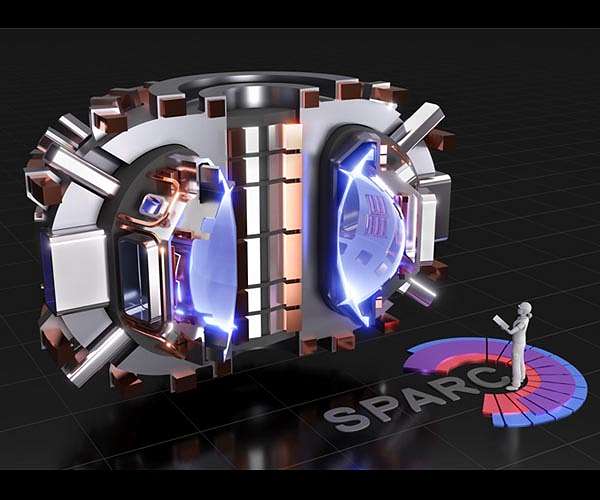
As part of the Journal of Plasma Physics' continuing focus on the scientific progress in fusion physics, the journal editors and Cambridge University Press are proud to present an important Special Issue of JPP, the Status of the SPARC Physics Basis.
This special issue's seven peer-reviewed articles provide a comprehensive summary of the physics basis for SPARC: a compact, high-field, DT burning tokamak, currently under design by a team from the Massachusetts Institute of Technology and Commonwealth Fusion Systems.
SPARC is a new nuclear reactor concept based on fusing hydrogen nuclei rather than splitting uranium atoms. The intense design work happening at MIT builds on two big ideas. They are leveraging decades of scientific progress in magnetic confinement fusion, and marrying that with recent breakthroughs in high-temperature superconductor technology. How they will handle the challenges of delivering on the promise of fusion energy with these foundations is laid out in these seven peer-reviewed articles that make up the special issue of JPP.
William Dorland, JPP Editor, University of Maryland, USA, said: "This is one of a growing number of fusion projects with significant non-governmental funding, and it is the first and only project with substantial private funding to publish a detailed, peer-reviewed study of the physics basis of the proposed experiment. I expect this collection of papers to raise the bar that private investors use to estimate the risks and rewards associated with fusion investments."
This progress puts researchers in a position to take advantage of a technological break-through developed outside of the field, namely the emergence of high-temperature superconductors (HTS) as a practical engineering material.
Guest Editorial Author Martin Greenwald, Plasma Science and Fusion Center, Massachusetts Institute of Technology: "These studies put SPARC on a firm scientific basis. When we build and operate the machine as described in these papers, we fully expect to meet our target for fusion gain and produce a wealth of new and important information on burning plasmas"
Leveraging the broad progress in tokamak physics, the SPARC design has been fundamentally informed by existing experimental observations, as was ITER's, but also by first principles, theory-based modelling. Both approaches result in essentially the same prediction of overall plasma performance and fusion gain, thereby increasing confidence in the projections. Ongoing work features the use of state-of-the-art codes for calculation of RF heating, turbulent transport, pedestal structure, edge profiles, MHD stability, and ripple losses of fast alphas.
The seven papers review the basic parameters of the machine, predictions of core and pedestal performance, RF heating, divertor physics, MHD, disruptions and the confinement of fast particles.
"JPP is proud to host this set of important papers, which lay out how to use state-of-the-art plasma physics science to design and engineer a fusion reactor experiment. Plasma physicists are part of a vibrant scientific community that is driven by technological advances. We are excited to be the platform chosen by the SPARC team for this set of important scientific publications. This reinforces a standard for the way in which new experiments can be proposed: in an open-access, peer-reviewed format." - William Dorland
With the basic machine parameters set, the SPARC physics team has already begun a deeper level of physics analysis, aimed at informing and confirming design choices, developing a range of operational scenarios and control strategies, defining diagnostic needs and outlining the scientific research program.

Scientists present a comprehensive physics basis for a new fusion reactor design
Cambridge UK (SPX) Sep 30, 2020 - As part of the Journal of Plasma Physics' continuing focus on the scientific progress in fusion physics, the journal editors and Cambridge University Press are proud to present an important Special
www.spacedaily.com
It’s great to have neighbors you can depend on, whether you’re borrowing a cup of sugar or you need someone to walk your dog while you’re out of town. In the western Colorado neighborhood of Basalt Vista, the residents are even closer than most: They share their electricity. But unlike your neighbor with the sugar, the residents of Basalt Vista may not even know when they’re being generous. The energy exchanges happen automatically, behind the scenes. What residents do know is how inexpensive, reliable, and renewable their electricity is.
The 27 smart homes in Basalt Vista, located about 290 kilometers west of Denver, are part of a pilot for an altogether new approach to the power grid. The entire neighborhood is interconnected through a microgrid that in turn connects to the main grid. Within each home, every smart appliance and energy resource—such as a storage battery, water heater, or solar photovoltaic (PV) system—is controlled to maximize energy efficiency.
On a larger scale, houses within the neighborhood can rapidly share power, creating reliable electricity for everyone—solar energy generated at one house can be used to charge the electric car next door. If a wildfire were to knock out power lines in the area, residents would still have electricity generated and stored within the neighborhood. From the spring through the fall, the PV systems can provide enough electricity and recharge the batteries for days at a time. In the dead of winter, with the heat running and snow on the solar panels, the backup power will last for about 2 hours.
Full Page Reload
Umkhonto
Ylipäällikkö
Eipä ollut tarpeeksi tuuli- ja aurinkosähköä saatavilla kun OL2 "poistui rivistä". Eli hyvä muistutus siitä että tarvitaan perusvoimaa ja lisäksi säätökapasiteettia. Energiantuotantoon ei ole olemassa kaikenkattavaa "One size fits all"-tyyppistä ratkaisua.
Sähkön hinta nousi ennätyksiin – Olkiluodon häiriö 25-kertaisti hinnan päivässä
Olkiluodon ongelmat ovat tuottaneet tänä vuonna jo kaksi ennätyksellistä hintapiikkiä sähkömarkkinoille.Olkiluodon ydinvoimalaitos
11.12. 13:18 Päivitetty 11.12. 18:25
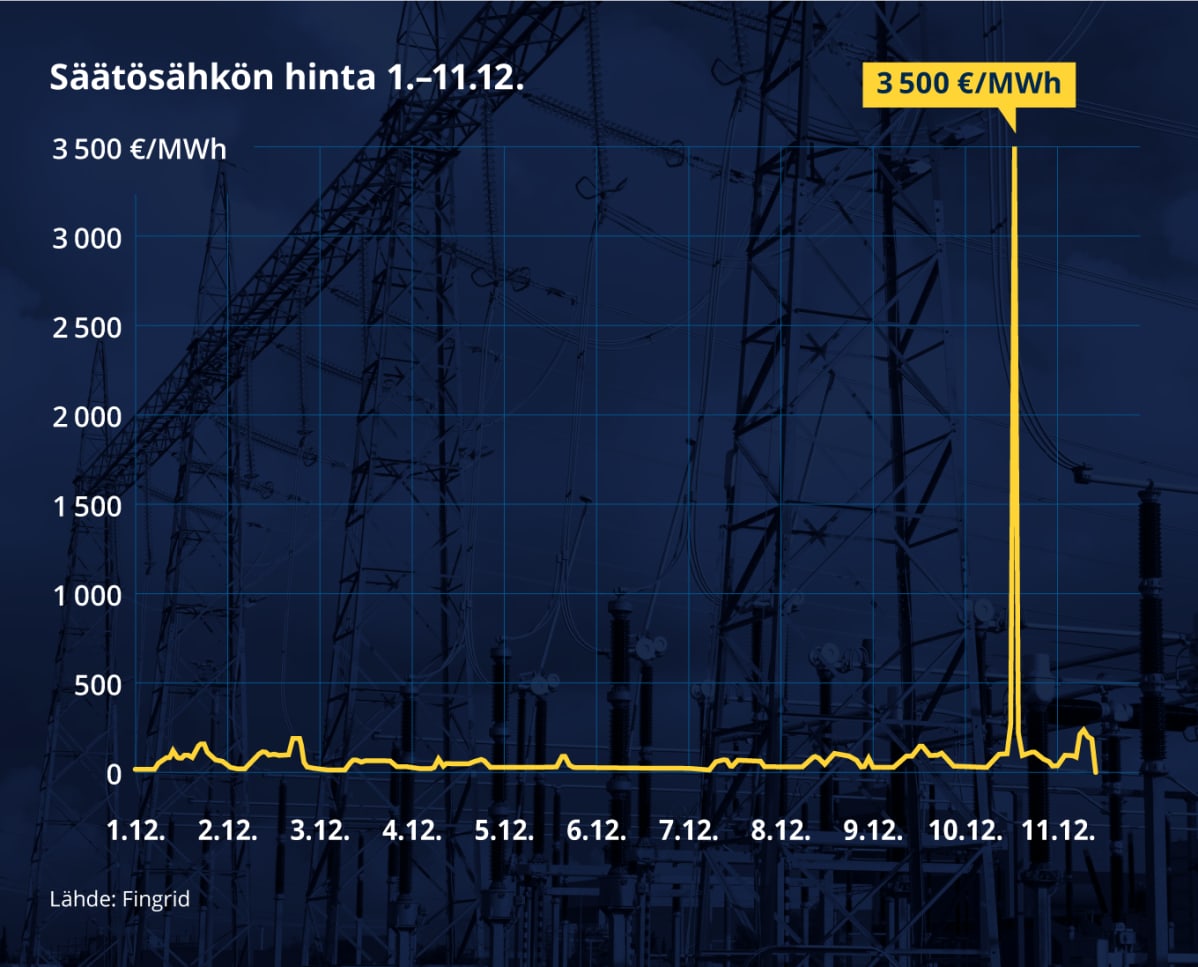
Henrietta Hassinen / Yle, grafiikka: Samuli Huttunen / Yle
Olkiluodon ydinvoimalan häiriö ja toisen yksikön sulkeminen nostivat eilen sähkön hinnan Suomen ennätystasolle.
Niin sanotun säätösähkön hinta nousee harvoin useampaan sataan euroon megawattitunnilta, mutta eilen hinta heilahti 3 500 euroon. Hurja hintapiikki oli kello 13 eli pian Olkiluoto 2:n pysäyttämisen jälkeen.
Edellisenä päivänä samaan aikaan hinta oli 139 euroa, joten hinta hyppäsi vuorokaudessa yli 25-kertaiseksi. Terävin piikki kesti vain tunnin, sillä osittain automaattiset järjestelmät lisäsivät vesivoiman tuotantoa Suomessa ja sähkön tuontia Ruotsista.
Kantaverkkoyhtiö Fingridin suunnittelupäällikkö Timo Kaukonen kertoo, että 3 500 euron hintoja Suomessa on nähty historiassa vain kerran aikaisemmin.
Silloinkin syynä oli Olkiluodon ongelmat. Viime huhtikuun puolivälissä sama Olkiluodon kakkossreaktori ajettiin alas ja hinta pinkaisi silloinkin samaan 3 500 euroon kuin nytkin.
– 2 999 euron tuntihintoja on nähty harvoin, mutta yli kolmeen tuhanteen euroon hinta ei ole noussut kuin tämän vuoden kahtena kertana, Kaukonen kertoo.
Kenelle meni kolmen miljoonan euron lasku?
Olkiluodon pysäyttäminen häiriön takia tarkoitti täysin odottamatonta 880 megawattitunnin (siirryt toiseen palveluun) häviämistä sähkön tuotannosta. Kaikkiaan Suomen sähköntuotanto on liikkunut viime päivinä 9 000 - 10 000 megawattitunnin tuntumassa, joten yhden ydinreaktorin sulkeminen teki tuotantoon lähes kymmeneksen vajauksen.
Sähkön säätöhinta muodostuu Pohjoismaisella säätömarkkinoilla, joista Fingrid hyväksyy Suomessa suurten sähköntuottajien ja -kuluttajien osto- ja myyntitarjouksia.
Fingridillä on valtuudet rajoittaa sähkönkulutusta Suomessa, jos sähkön riittävyys alkaa olla uhattuna. Nyt Kaukosen mukaan sähkön riittävyys ei ollut vaarassa, edes varavoimaa ei täytynyt käynnistää.
Olkiluodossa tuottamatta jäänyt 880 megawattituntia on täytynyt korvata muualla tuotannolla, ja lasku siitä lankeaa suurelta osin Olkiluodon omistavien Teollisuuden Voiman asiakkaiden eli muun muassa metsäteollisuuden maksettavaksi.
Kaukosen mukaan ei voida kuitenkaan tietää, kuinka suuri lasku on, koska osa suurista sähkön kuluttajista on myös itse sähkötuottajia. Teoriassa 3 500 euron hinnalla ostettu 880 megawattituntia tarkoittaa runsaan kolmen miljoonan euron laskua yhdessä tunnissa.
Häiriön aiheuttamaa tuotannon romahdusta paikattiin monin tavoin: Muun muassa lisäämällä vesi- ja lämpövovoiman tuotantoa sekä vähentämällä suurteollisuuden kulutusta. Lisäksi tuontia Ruotsista lisättiin, mutta sitä ei jouduttu kasvattamaan äärirajoille. Osaltaan asiaa auttoi se, että tuulivoimaa oli suhteellisen hyvin tarjolla.
11.12. klo 14.20 Sana onnettomuus muutettu häiriöksi.
https://yle.fi/uutiset/3-11692494
Umkhonto
Ylipäällikkö
Ja mistä "häirössä" lopulta olikaan kyse? Sen kertoo reaktoriturvallisuuden professori.
https://fissioreaktori.wordpress.com/2020/12/11/olkiluodon-kayttohairio/
https://fissioreaktori.wordpress.com/2020/12/11/olkiluodon-kayttohairio/
@Umkhonto miten se tuuli-ja aurinkosähkö tähän liittyi? Edellämainitut eivät ole säätövoimaa ja ydinvoima tarvitsee säätövoimaa myös, kuten tuuli-ja aurinkosähkökin. Eli oli tuuli-ja aurinkovoimaa tai ei täytyy ydinvoiman korvaava säätövoima tuottaa jollain menetelmällä, tähän soveltuu vaikka vesivoima (jos vesivarastot riittävällä tasolla) sekä reservinä olevat kaasuturbiinit. "Kalliita" reservivoimaloita on Suomessa muuten juuri erityisesti ydinvoimaloiden takia.
Researchers from Chalmers University of Technology have produced a structural battery that performs ten times better than all previous versions. It contains carbon fibre that serves simultaneously as an electrode, conductor, and load-bearing material. Their latest research breakthrough paves the way for essentially 'massless' energy storage in vehicles and other technology.
The batteries in today's electric cars constitute a large part of the vehicles' weight, without fulfilling any load-bearing function. A structural battery, on the other hand, is one that works as both a power source and as part of the structure - for example, in a car body. This is termed 'massless' energy storage, because in essence the battery's weight vanishes when it becomes part of the load-bearing structure. Calculations show that this type of multifunctional battery could greatly reduce the weight of an electric vehicle.
The development of structural batteries at Chalmers University of Technology has proceeded through many years of research, including previous discoveries involving certain types of carbon fibre. In addition to being stiff and strong, they also have a good ability to store electrical energy chemically. This work was named by Physics World as one of 2018's ten biggest scientific breakthroughs.
The first attempt to make a structural battery was made as early as 2007, but it has so far proven difficult to manufacture batteries with both good electrical and mechanical properties. But now the development has taken a real step forward, with researchers from Chalmers, in collaboration with KTH Royal Institute of Technology in Stockholm, presenting a structural battery with properties that far exceed anything yet seen, in terms of electrical energy storage, stiffness and strength. Its multifunctional performance is ten times higher than previous structural battery prototypes.
The battery has an energy density of 24 Wh/kg, meaning approximately 20 percent capacity compared to comparable lithium-ion batteries currently available. But since the weight of the vehicles can be greatly reduced, less energy will be required to drive an electric car, for example, and lower energy density also results in increased safety. And with a stiffness of 25 GPa, the structural battery can really compete with many other commonly used construction materials.
"Previous attempts to make structural batteries have resulted in cells with either good mechanical properties, or good electrical properties. But here, using carbon fibre, we have succeeded in designing a structural battery with both competitive energy storage capacity and rigidity," explains Leif Asp, Professor at Chalmers and leader of the project.
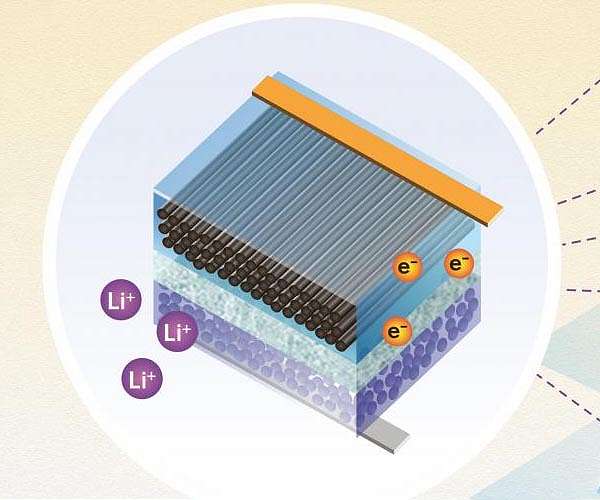
Big breakthrough for 'massless' energy storage
Gothenburg, Sweden (SPX) Mar 24, 2021 - Researchers from Chalmers University of Technology have produced a structural battery that performs ten times better than all previous versions. It contains carbon fibre that serves simultaneously a
www.spacedaily.com
Compared to lithium-ion batteries, flywheel batteries essentially last forever. “You can charge and discharge all day every day for 30 years, and your [flywheel] battery will still have 100% capacity,” Jawdat says. “With chemical batteries, you have to keep replacing them every five to ten years,” which drives up the cost for long-term usage.
With the help of funding from the National Science Foundation, Revterra built and tested a working prototype 1 kW flywheel system. And Jawdat and his team have been working on a commercial scale 100 kWh system.
“We need a way to store vast amounts of energy without creating a lot of additional negative environmental impact if we are going to really transition to low emission renewable power sources,” says Jawdat. “I think there is a lot of work being done on this, and [flywheels have] a lot of promise as a clean energy storage solution.”
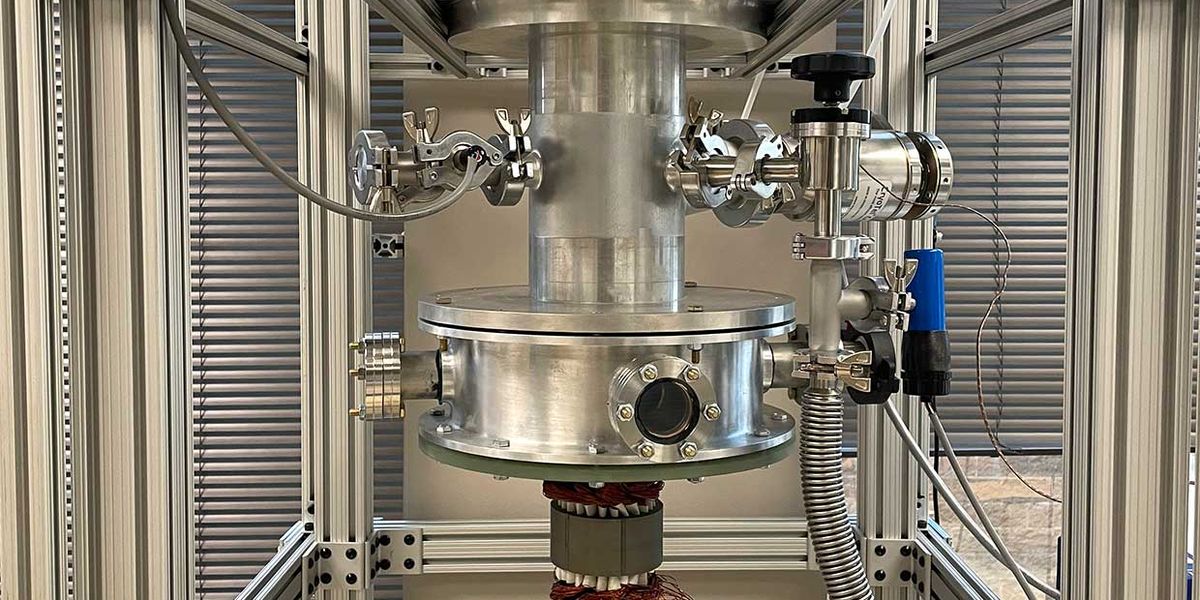
Flywheels Turn Superconducting to Reinvigorate Grid Storage Potential
Energy losses defeated previous-gen flywheels as viable big batteries; so new ones levitate more efficiently
 spectrum.ieee.org
spectrum.ieee.org
Flywheels are now coming back at a time when the push for renewable energy is soaring in the U.S. A key Biden administration climate goals is to make the U.S. a 100% clean energy economy with net-zero emissions by 2050. And California—the fifth largest economy in the world if it were a country—made it a state law to hit a 100% renewable energy goal by 2045.
All that renewable energy will need grid storage, too. For which there are many contenders. But each leading grid-scale storage tech is not without its drawbacks, says Jawdat. Chemical batteries degrade over time—and lithium-ion’s cobalt problems and other sourcing challenges don’t make the challenge of affordable, grid-scale batteries any easier. Another popular technique, compressed air energy storage, is cheaper than lithium-ion batteries but has very low energy efficiency—about 50%.
Ei minun tietääkseni. Ydinvoimalla ajetaan peruskuormaa, koska se on niin halpaa (=polttoaine on halpaa, kun voimala on kerran rakennettu). Tarvittaessa sitä pystytään kyllä säätämään hyvin. Se että ydinvoiman rakennettu kapasiteetti ei riitä kattamaan kuin murto-osan sähkönkulutuksesta on toinen asia.@Umkhonto miten se tuuli-ja aurinkosähkö tähän liittyi? Edellämainitut eivät ole säätövoimaa ja ydinvoima tarvitsee säätövoimaa myös, kuten tuuli-ja aurinkosähkökin. Eli oli tuuli-ja aurinkovoimaa tai ei täytyy ydinvoiman korvaava säätövoima tuottaa jollain menetelmällä, tähän soveltuu vaikka vesivoima (jos vesivarastot riittävällä tasolla) sekä reservinä olevat kaasuturbiinit. "Kalliita" reservivoimaloita on Suomessa muuten juuri erityisesti ydinvoimaloiden takia.
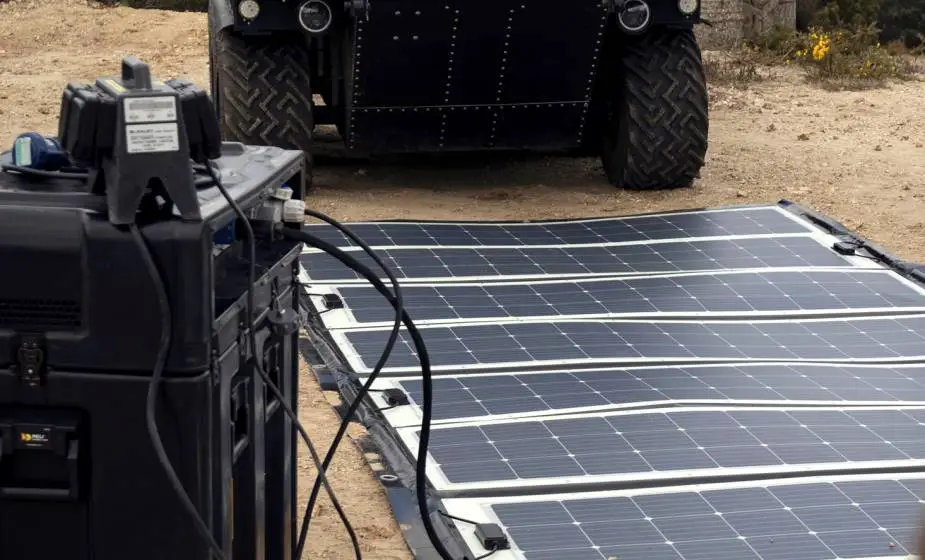
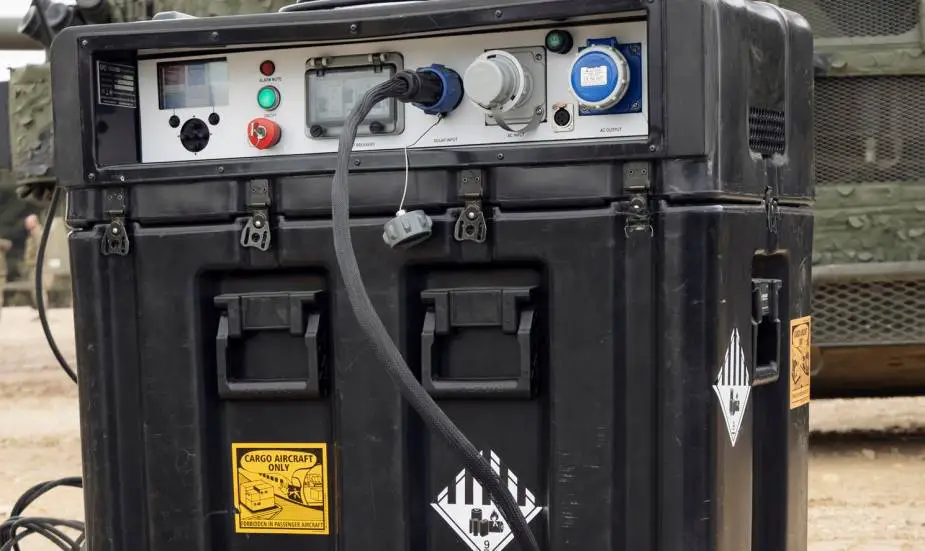
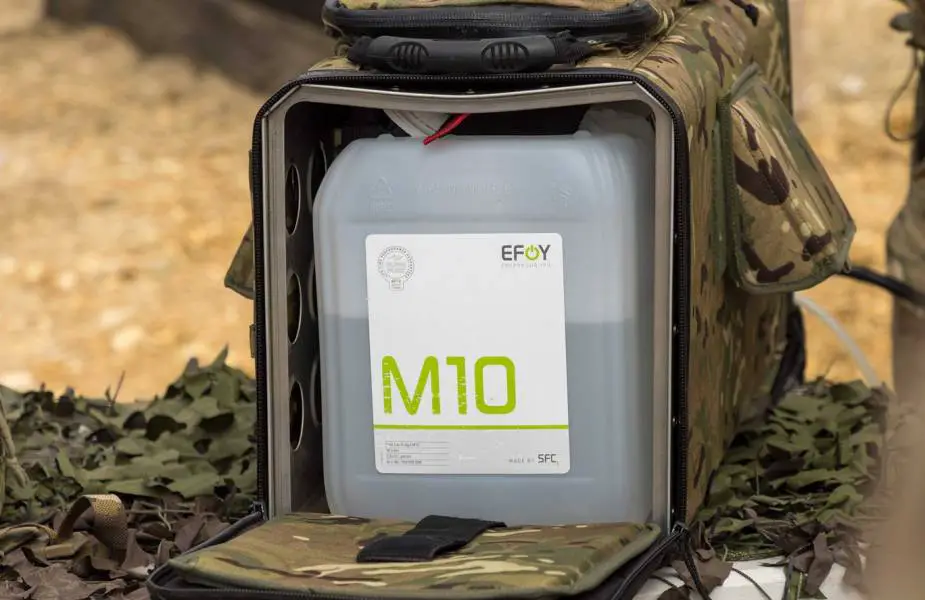
Various green expeditionary power solutions are currently being put through their paces by long-range patrol units in Mali on Operation Newcombe. These patrols, which have been protecting local communities and deterring terrorist activity, need portable power banks due to the vast areas they cover, up to 1,500km, the unreliability of static power sources and the need to retain a low profile.
Finding a renewable source of energy means less fuel to be carried, less impact on the local community and the environment as well improved capability through reliable low-profile power, without heat or noise emissions.
Some of the power banks used are methanol generators or Lithium-Ion batteries paired with solar panels, which are ideal for supplementing power for a patrol base. In combination, they can be deployed by two people in under a minute and can power a headquarters, including communications equipment, on a tiny portion of fuel almost indefinitely. The green power banks have been tested in temperatures up to 50°C.
Captain Alex Rudd of the Light Dragoons in Mali said: “This new power bank allows us to be more self-sufficient on the ground. It provides a lighter and more fuel-efficient power option. As well as lasting longer than more conventional fuels that we have used in the past, it provides a tactical advantage. This is because platforms no longer need to be started to maintain a constant power source. “The power bank runs with no noise emissions, reduces the risk of detection and provides safety and security to deployed troops. Most importantly, its simple setup procedure enables troops to quickly get it up and running.”
As well as providing British troops on the ground with greater range and efficiency, the Army’s Armoured Trials & Development Unit (ATDU) has been investigating how to source power without creating problems for local communities.
The Army has previously relied on diesel to power vehicles and equipment. But this has created noise and air pollution as well as the risk of oil spills. Renewable energy solutions, such as the exportable ‘off the grid’ power bank solutions now being trialled, significantly reduce these unwanted impacts on local populations and showcase UK renewable tech in a high-profile operation.
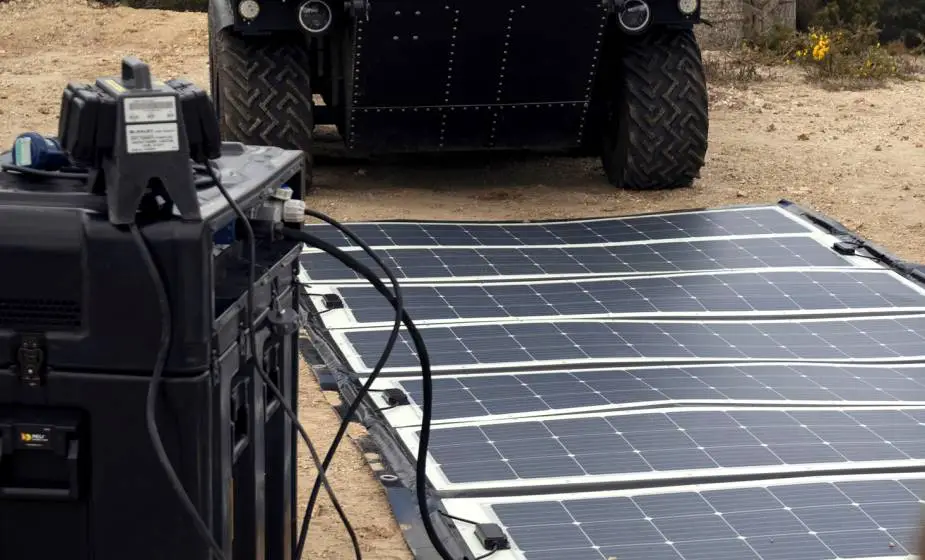
British soldiers test innovative green power bank in Mali
The British Army is testing a sustainable power bank that will help soldiers operate in remote areas where access to power is limited or non-existent. The
Solidsnake
Respected Leader
Metanolia käytetään polttokennoissa, niitäkö nämä on?,siis alimmassa kuvatuksessa



British soldiers test innovative green power bank in Mali
The British Army is testing a sustainable power bank that will help soldiers operate in remote areas where access to power is limited or non-existent. Thewww.armyrecognition.com
Ehkä. En ole aivan varma.Metanolia käytetään polttokennoissa, niitäkö nämä on?,
On. Tässä valmistaja https://www.efoy.com/ ja https://www.sfc.com/en/technology/direct-methanol/Metanolia käytetään polttokennoissa, niitäkö nämä on?,siis alimmassa kuvatuksessa
Suoraan MIL-tuotteisiin https://www.sfc-defense.com/en/
Juutuupi https://youtube.com/channel/UCEp0izhxMEhbPg_HYbErr1g
Viimeksi muokattu:
